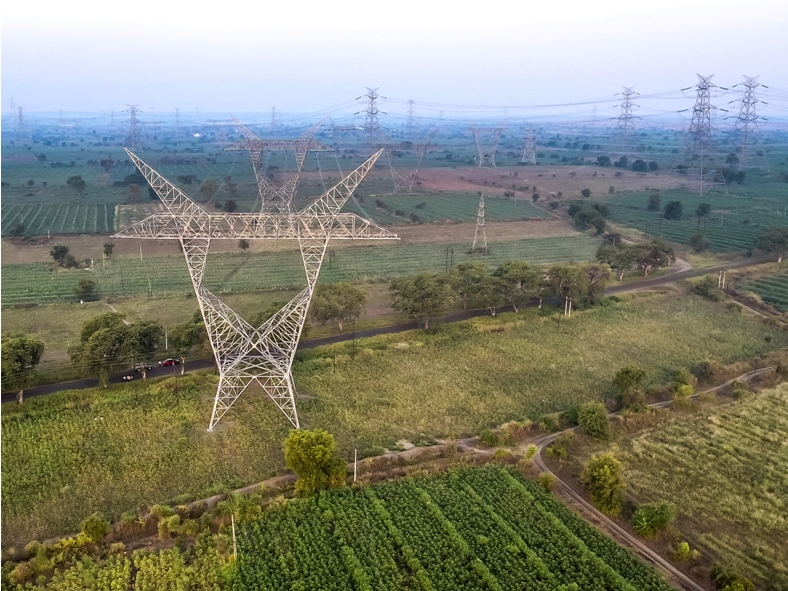Power Grid Corporation of India (PGCIL) added around 3 GW of interregional power transfer capacity in FY21, the Central PSU said in a recent investor presentation.
The 3 GW (or 3,000 mw) of interregional (IR) capacity added in FY21 came from the commissioning of underlying transmission assets that included around 6,500 ckm of transmission lines and nine substations with an aggregate transformation capacity of nearly 27,300 MVA.
As of May 31, 2021, PGCIL’s IR capacity stood at 90,090 mw, which accounted for 85 per cent of India’s total. As of March 30, 2020, PGCIL’s IR capacity was 87,090 mw. The Central PSU has been maintaining its share of around 85 per cent in the country’s IR capacity, over the past several years.
Meanwhile, India’s total IR capacity, as of May 31, 2021, was an estimated 106 GW. According to a government estimate made in October 2020, India’s total IR capacity is expected to reach 118 GW by March 2022. As of March 31, 2020, this level stood 102.5 GW.
Asset base
As May 31, 2021, PGCIL (along with its 22 subsidiaries and nine joint ventures) owned 1,304 transmission lines with an aggregate length of 1,68,256 ckm, and 259 substations with total transformation capacity of 4,38,108 MVA.
Capex target achieved
PGCIL undertook capital expenditure worth Rs.11,284 crore during FY21. Though this was lower than that in FY20 and understandably so in view the pandemic situation, it did surpass the target.
Though the investor presentation discussing the company’s performance in FY21 did not specify the capex target for FY21, it is learnt to be Rs.10,500 crore, from previous PGCIL communications. [The FY21 target had also undergone interim downward revision.] In FY20, actual capital expenditure by PGCIL was Rs.15,313 crore.
The capex figures discussed above are on a consolidated basis, which is to say, they consider the PGCIL Group – PGCIL, and its subsidiaries. The standalone capex by PGCIL in FY21 was Rs.7,264 crore and that by its subsidiaries, Rs.4,020 crore.
PGCIL implements power transmission projects on both RTM (regulated tariff mechanism) and TBCB (tariff-based competitive bidding) routes. For TBCB projects, wholly-owned subsidiaries need to be incorporated. Thus the standalone capex by and large stands for RTM projects whereas the subsidiaries’ capex represents TBCB projects.
Business Outlook
PGCIL estimates Rs.41,000 crore of business opportunities, out of which Rs.10,300 crore in the form of “immediate upcoming” opportunities. This “immediate” opportunity includes Rs.9,300 crore in the form of interstate transmission works for renewable energy evacuation, and Rs.1,000 crore for intrastate transmission projects in TBCB mode. This also reflects PGCIL’s intent of participating in state-level power transmission upgrade.
It may be mentioned that since January 2021, five interregional power transmission projects under TBCB mode have been awarded. All these have been bagged by PGCIL.



